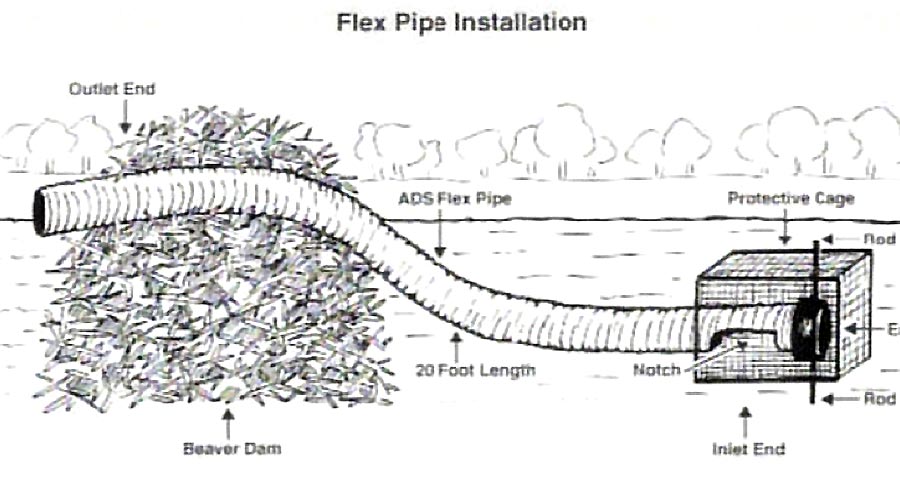What are Nature-Based Solutions (NBS)?
Nature Based Solutions (NBS) is a means of conservation, managing, and restoring interventions that are intentionally planned to produce positive climate adaptation and mitigation benefits (Nature-based solutions for climate change. WWF, n.d.). NBS for climate change resiliency, harnesses the power of nature to decrease greenhouse gas emissions and tackle climate change.
The earth itself is able to adapt to climate change, substitute and complement engineered solutions and is able to serve multiple purposes. For example, trees are an NBS that takes carbon dioxide from the atmosphere and stores it, to then release oxygen. Trees work to stabilize the greenhouse effect and minimize the impact that carbon dioxide has in the exacerbation of climate change. (Nature-based solutions for climate change. WWF, n.d.). Nature-based solutions provide a range of benefits and use nature’s own adaptation mechanisms to do so.
Beavers as an NBS

Sustainable drainage systems, is an emerging climate change adaptation method that encourages long-term and cost-effective alternatives. An example of this is beavers. Beavers constantly modify the environment by cutting down trees for building their habitats in-stream. As a result, their habitats block flowing water and alter the ecosystem around. Many people dislike beavers and take serious measures to protect their waterways (Cows and Fish, 2022). Beavers are ecosystem engineers and can be used as a natural infrastructure tool (Müller-Schwarze, 2011). Through building the dams, beavers are able to cycle nutrients in water, increase the retention of sediment and organic material, modify and increase riparian zones, and are able to store hundreds of meters of groundwater (Miistakis Institute, n.d.).
With climate change causing more intense weather conditions and unpredictable changes, Canada has been increasingly facing seasons of heavy precipitation, extremely hot days, and more, at a more frequent rate.
What role does the beaver have in all this?
Beavers and their dams can actually make a great NBS as they are able to control the risk of flood. If correctly implemented, beaver dams along with pond levellers and eco-passages, can create a system where the dam blocks excess water from going through, while also allowing fish to go through with eco-passages (The Snohomish Pond Leveller - Beaver Institute, n.d.).

(Lee, n.d.)
Mangroves as an NBS

Found in many parts of Asia and South America, mangroves help restore ecosystems and protect coastal communities. A loss of these trees can be devastating and may leave coastal communities, and native species vulnerable to sea level rise and polluted waters (United Nations, n.d.). Mangroves are able to influence wave attenuation, create populations of shrimp, and fish, release nutrients in the water and work as nature’s own dyke/ barrier (United Nations, n.d.). Research has shown that planting a mangrove forest along coastal systems can be a more cost-effective solution compared to other engineered solutions like implementing a dyke system (Slinger et al., 2021). In addition to mangroves, salt marshes, dunes, and coral reefs all have similar resilience and regeneration properties that make for great NBS.
Barriers and Trade Offs
NBS, while an interesting means of adapting to climate change, also comes with some barriers. Many barriers are related to our dependency on the carbon dioxide sink function of specifically plants and trees. A forest built to absorb carbon dioxide as a NBS, can also do exactly the opposite of what was intended due to the climate being so unstable and unpredictable. Carbon is still able to be removed with the changing ecosystems from wildfires, pest outbreaks, etc. and with climate change continuing to progress, it may influence whether NBS may be the right alternative for a certain area.
Additionally, large-scale NBS may conflict with land-use. NBS will need to be implemented along with certain measures that will help reduce land-use pressures. Other barriers include the lack of ecosystem services to have a capacity to withstand applied NBS, the fluctuating climate, and difficulty in maintaining and monitoring the NBS (Nature-based solutions for climate change. WWF, n.d.).
A NBS-Focused Approach to Climate Change
Considering the barriers which come with every new adaptation method to climate change, we are able to notice both the pros and cons. While sometimes engineered solutions may be necessary for the type of ecosystem, in many cases NBS can be the better option. Nature-based solutions encourage working with nature to reduce carbon emissions and improve overall resilience to future climate change impacts.
Let us work together to support more synergistic approaches to tackling climate change involving aspects of nature-based solutions to encourage a more sustainable future.
References
Home. Cows and Fish. (2022, January 24). Retrieved February 16, 2022, from http://cowsandfish.org/
Lee, D., & David Lee works in the Habitat Section as a project leader. (n.d.). Practiced in the art of deception. Utah Division of Wildlife Resources. Retrieved March 8, 2022, from https://wildlife.utah.gov/news/wildlife-blog/683-practiced-in-the-art-of-deception.html
Müller-Schwarze, D. (2011). The beaver. Cornell University Press.
Miistakis Institute. (n.d.). Retrieved February 16, 2022, from https://rockies.ca/
Nature-based solutions for climate change. WWF. (n.d.). Retrieved February 16, 2022, from https://wwf.panda.org/discover/our_focus/climate_and_energy_practice/what_we_do/nature_based_solutions_for_climate/
Nature-based solutions and climate change. LUC - Environmental Planning, Design and Management. (2021, July 5). Retrieved February 16, 2022, from https://landuse.co.uk/nature-based-solutions-and-climate-change/
Slinger, J., Stive, M., & Luijendijk, A. (2021). Nature-based solutions for coastal engineering and management. Water, 13(7), 976.
The Snohomish Pond Leveler - Beaver Institute™. Beaver Solutions. (n.d.). Retrieved February 16, 2022, from https://www.beaverinstitute.org/wp-content/uploads/2017/07/TheSnohomishPondLeveler.pdf
United Nations. (n.d.). Biodiversity and nature-based solutions. United Nations. Retrieved February 16, 2022, from https://www.un.org/en/climatechange/climate-solutions/biodiversity-and-nature-based-solutions